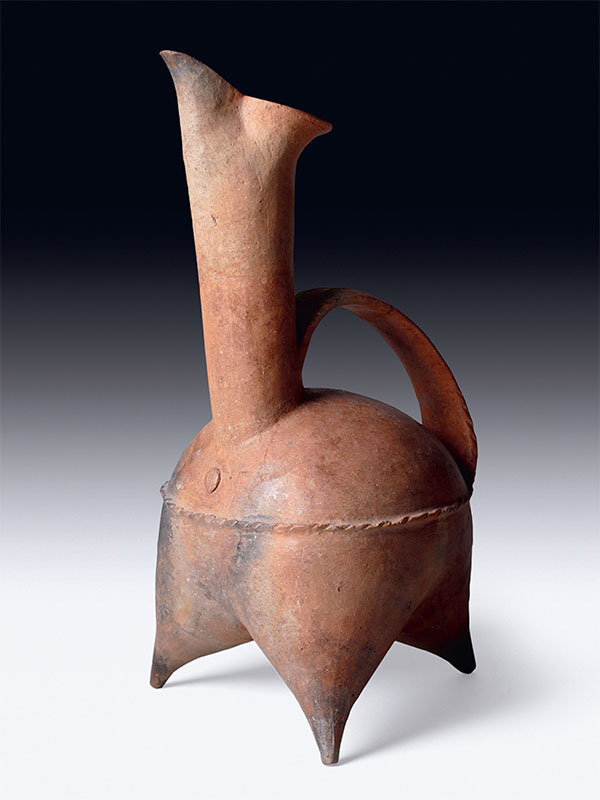Pottery tripod ewer
China, Neolithic period, Longshan Culture, Late 3rd – early 2nd Millennium BC
A pottery tripod ewer with a bulbous body supported on three pointed legs and surmounted with a long, spouted neck and a strap handle issuing from the lower neck to the rear end of the body. A narrow, twisted band that ends on either side of the base of the handle and a raised button on the front are the only decorative elements, together with two incised vertical bands on the outside of the handle. The buff material is fired to a light orange-brown surface with some grey areas.
The Longshan culture marked an important phase in Neolithic ceramic production. It spread from the central Huanghue region, in the Shaanxi and Henan provinces, to eastern China, the Shandong and Jiangsu provinces. In the eastern regions, innovations already started in the Dawenkou culture, such as the use of the wheel and the reduction firing kiln, were further developed by the Longshan potters. Their wares are thus recognizable for their lightness and refined shapes. Tripod ewers, gui, such as this example, were mostly made of light earthenware, and for this reason often called ‘white’ pottery.[1] A similar, slightly earlier tripod jug from the Dawenkou culture is in the collection of the Metropolitan Museum of Art, New York, accession number 1993.198.2.
Provenance: Sotheby’s London 7 December 1993, lot 117
- Krahl, R., Chinese Ceramics from the Meiyintang Collection, London 1994, vol. 1, p. 34

